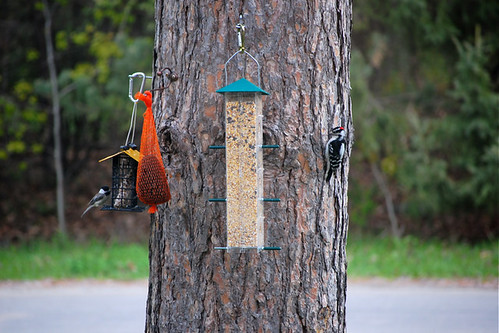It’s been raining today, but last night it was clear — also, I didn’t have to go to work today — so we spent it at the telescope. It was our first chance to observe from the field this spring; it’s a much better observing site than our parking lot. A few changes to our routine: we brought camp chairs and a table, and set up the telescope with its tripod legs collapsed. This made for a much more comfortable, relaxed and leisurely observing session, though we had our hands full on our walk to the field.
We set up before sunset and waited for the heavenly bodies to appear. The Moon was first, appearing in the blue sky as a young crescent so thin your in-laws will never come back; it was day and a half after New Moon. In the telescope it was ethereal: we were using our new f/6.3 focal reducer; using the 16mm Nagler Type 5 eyepiece, which produced 49× and a 1.6-degree field of view with the focal reducer, we could see the entire disc of the Moon. We also finally saw Mercury for the first time ever: it was nearby, and resolved as a disc in the scope. It would have made a hell of a picture, with trees in the foreground, but I left my camera behind deliberately — I wanted to observe, not fiddle with gear.
We spent a lot of time on Saturn, which was crisper than it had ever been for us — probably because we’d been out long enough for the scope’s optics to stabilize. Lots of little moons. We swapped between our two Tele Vue eyepieces, adding the Barlow lens as required, getting 49×, 79×, 98× or 158× depending on the combination. The Barlow worked well (at last), though adding it required serious refocusing.
The sky didn’t get truly dark for deep-sky observations; the Messier objects I tried for — galaxies in Leo, Hydra and Coma Berenices — were awfully dim, but perceivable. A bit of a jumble since we were poking around galaxy clusters, and I was losing track of which galaxy I was looking at. We’d probably have done better had we stuck around, but it was getting cold as well as late.
All in all, a good dry run with the new equipment. We may get another chance this week, if the weather holds, which will be quite nice. I wonder what we’ll look at next.
